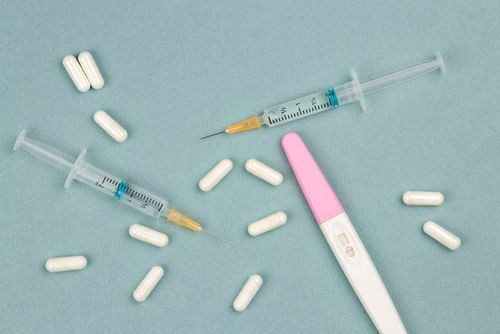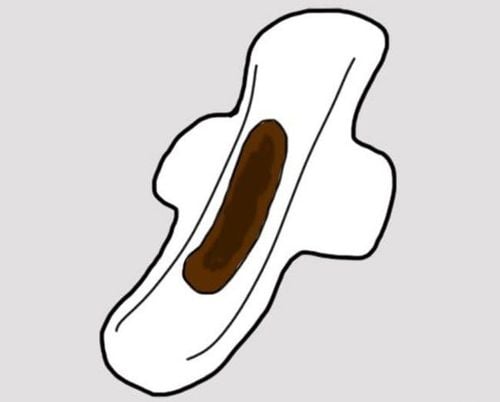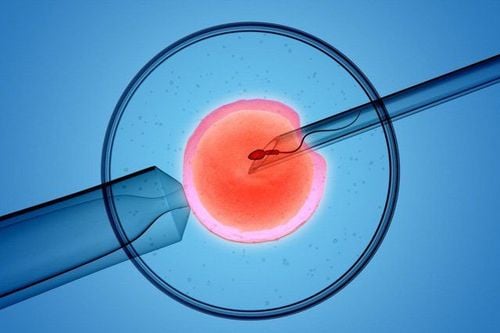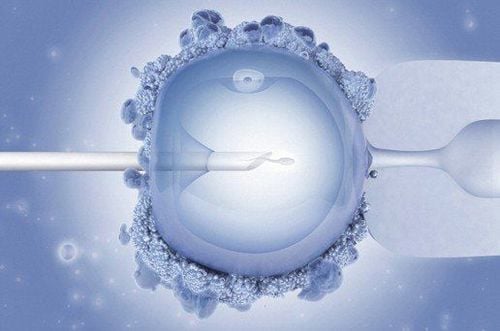This is an automatically translated article.
A couple who is unable to conceive after having regular, continuous sex for 1 year without using any contraception is considered infertile. Infertile couples can choose from the following treatments to increase fertility.
1. What is infertility? How is the treatment?
Inability to conceive after having regular sex for 1 year without using any contraceptive is called infertility. Infertility can be caused by either spouse or both.
Studies have shown that women's problems contribute to more than half of infertility cases. Meanwhile, most of the causes of male infertility are sperm quality.
Infertility treatment depends on the following factors:
Causes of infertility Duration of infertility Both husband and wife's age Personal preferences

Chất lượng tinh trùng ở nam giới là nguyên nhân gây vô sinh
Infertility treatment not only requires a lot of money, but it also requires couples to have good psychological, physical and also time.
In men, infertility treatment is done when there is a lack of healthy sperm or general sexual problems. Treatments include:
Drugs Surgery Lifestyle Changes Sperm Recapture For women, although it is possible to restore fertility using just one or two therapies, it is also possible. You need some therapy before you can conceive. Some treatments for female infertility include:
Stimulation of ovulation with fertility drugs Surgery to restore fertility Intrauterine insemination (IUI) In cases where pregnancy does not occur Naturally, couples can use assisted reproductive technology (ART) to get pregnant. This is a form of fertility treatment that involves handling sperm and eggs.

Các bước thụ tinh trong ống nghiệm (IVF)
A common ART technique is in vitro fertilization (IVF). This is a process where eggs and sperm are combined in a laboratory, then the embryos are transferred into the uterus. Some measures related to in vitro fertilization such as:
Intracytoplasmic sperm injection (ICSI) Assisted hatching Donor eggs or sperm Surrogacy
2. Infertility treatments
2.1. Fertility drugs Some commonly used fertility drugs are Clomiphene, Gonadotropins. These drugs help regulate a woman's reproductive hormones and trigger the release of one or more eggs during each menstrual cycle.
Most women with infertility use fertility drugs 3 to 6 months before conception or use another method of treatment.

Thuốc Clomiphene có thể gây ra các tác dụng phụ như đau vùng chậu
The advantages of this method are:
Ease of use The cost is cheaper than other treatments The disadvantages and some side effects of this method are:
Fertility drugs do increase the rate of twins, because it can stimulate the release of many eggs in a cycle. Clomiphene can cause side effects such as hot flashes, mood swings, pelvic pain, breast tenderness, ovarian cysts, nausea, thick and dry cervical mucus, headache, mild depression and visual symptoms. Gonadotropin may cause side effects such as rash or swelling at the injection site; mood swings, tightness in the chest, bloating, and headaches. About 10 to 20 percent of women taking gonadotropins develop a mild form of ovarian hyperstimulation syndrome, which causes the ovaries to enlarge and fluid to accumulate in the abdomen. Success rate of fertility drugs:
Clomiphene: about 80% of women using this drug will ovulate within the first three months of treatment. Of these, 30-40% of cases conceive in the third cycle of treatment. Gonadotropins: Women using this drug have a 15% chance of getting pregnant with well-timed intercourse per cycle. Cost: Cost depends on dosage and manufacturer. In addition to drug costs, you may incur other costs such as examination, ovarian ultrasound, testing,...

Trường hợp tắc ống dẫn trứng cần phẫu thuật điều trị hiếm muộn
2.2. Surgery
Surgical method is applied in the treatment of infertility caused by the following causes:
Genetic defects Fallopian tube blockage: surgery to open the blocked fallopian tube, allowing the egg to move towards the uterus. supply and fuse with sperm. Fibroids Endometrioma Polycystic ovary syndrome There are 2 commonly used surgical methods to treat gynecological diseases that cause infertility:
Laparoscopic surgery: Using small instruments and with A small camera is inserted through a small incision in the abdomen, allowing the doctor to see inside and proceed with necessary procedures accurately. Laparoscopic surgery: With this surgery, the doctor will make a large incision in the abdomen to be able to observe and conduct direct manipulations. The side effects and disadvantages of the surgical approach include:
You may feel some discomfort in your back or shoulder after arthroscopic surgery. This is because carbon dioxide is used during surgery to inflate your abdomen, making it easier for your doctor to see your internal organs. If you are under general anaesthesia, the breathing tube used for anesthesia may cause you to have a sore throat for a few days after surgery. Additionally, you may feel drowsy for several hours and may feel nauseous. You may have some soreness for a few days at the incisions. The success rate of this method depends on the condition of the patient and the type of surgery used to treat it.
Women with mild endometriosis have a 40% chance of getting pregnant within 8-9 months after laparoscopic treatment. Women with blocked fallopian tubes, after surgery to open the fallopian tubes will have a 21-59% chance of being able to conceive. For women with polycystic ovary syndrome who have surgery, there is a 50% chance of getting pregnant within a year afterward. The cost of surgery depends on the type of surgery, the type of disease, the type of anesthesia used.
2.3. Intrauterine insemination (IUI)

Thụ tinh trong tử cung làm tăng nguy cơ sinh đôi
Intrauterine insemination is a method of inserting a concentrated amount of sperm into a woman's uterus through a catheter inserted through the cervix.
This method has some of the following side effects and disadvantages:
You may experience cramping for a few days. Many women will need to take fertility drugs before having an IVF procedure. These women may experience some side effects such as: Increased risk of twins Increased risk of developing ovarian hyperstimulation syndrome (OHSS). May cause side effects such as tightness in the chest or mood swings. For couples with unexplained infertility, using this method has a pregnancy rate of 7 - 16% each time.
2.4. In vitro fertilization (IVF)
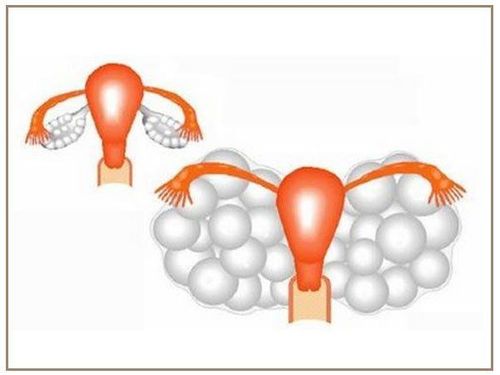
Hội chứng quá kích buồng trứng (OHSS)
In vitro fertilization (IVF) in which eggs are removed from a woman's ovaries and combined with sperm in a laboratory. If fertilization is successful, the embryo is then transferred to the woman's uterus.
In vitro fertilization has some of the following side effects and disadvantages:
If the doctor places more than one embryo in the uterus, the risk of having twins increases from 9 to 29%. Most women take gonadotropins before IVF. The drug causes side effects such as rash or swelling at the injection site, chest pain, mood swings, headache, bloating, and an increased risk of ovarian hyperstimulation syndrome (OHSS). You may experience cramping after egg retrieval You may experience cramping and bleeding after the embryo is transferred into the uterus. Most women will feel better after a day or two. The success rate of this method depends on many factors, especially the age of the woman. According to statistics from recent years in the United States, the success rate of IVF is as follows:
Women age 34 and younger have a success rate of: 40% Women 35 to 37 year olds have a success rate of: 31% Women 38 to 40 years old have a success rate of: 21% Women 41 to 42 years old have a success rate of: 11% Women 43 years and older has a success rate of: 5% The cost for each in vitro fertilization is relatively high from 70 - 90 million.
2.5. Intracytoplasmic sperm injection (ICSI)
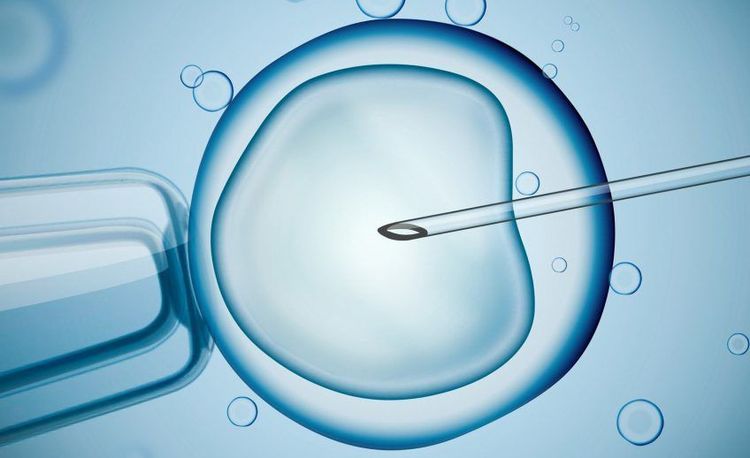
Hình ảnh tiêm tinh trùng vào bào tương (ICSI)
Intracytoplasmic sperm injection (ICSI) is commonly used in conjunction with IVF to correct male fertility conditions or to aid in fertilization when it is not possible. may face a challenge.
In this method, a single sperm is injected into the cytoplasm of an egg. The embryo is then transferred to the woman's uterus.
Side effects and limitations of intracytoplasmic sperm injection are:
Sperm can be obtained from the testicle by microneedling or surgical biopsy, so it can be painful despite being induced. local numbness. After sperm collection, you need to avoid strenuous activities for 5 - 10 days. This method has a successful fertilization rate of 50-80%. After insemination, your chances of having a baby will be the same as that of couples using IVF without the need for intracytoplasmic sperm injection. Specifically as follows:
Women aged 34 and under have a success rate of: 40% Women aged 35 to 37 have a success rate of: 31% Women aged 38 to 40 have a success rate is: 21% of women aged 41 to 42 have a success rate of: 11% of women aged 43 and older have a success rate of: 5% The cost of intracytoplasmic sperm injection will be higher cost of in vitro fertilization.
2.6. Intra-fallopian gamete transfer (GIFT)

Hầu hết phụ nữ phải sử dụng thuốc Gonadotropins trước khi sử dụng phương pháp vì vậy có thể gặp tác dụng phụ của thuốc
Intra-tubal gamete transfer is the method by which eggs are mixed with sperm in a laboratory. Then, laparoscopic surgery will put this mixture into the fallopian tubes so that fertilization can take place naturally inside the woman's body.
Intrafallopian gamete transfer has the following side effects and disadvantages:
More likely to have twins or triplets because more than one egg is usually placed in the fallopian tube. Recovery time is longer than in vitro fertilization. Pain around the laparoscopic incision. Most women must take gonadotropins before using this method, so side effects are possible. The success rate of this method is about 26.5% each time.
However, since the advent of in vitro fertilization and intracytoplasmic sperm injection, intra-fallopian transfer of gametes is rarely used.
2.7. zygote intra-fallopian transfer (ZIFT)
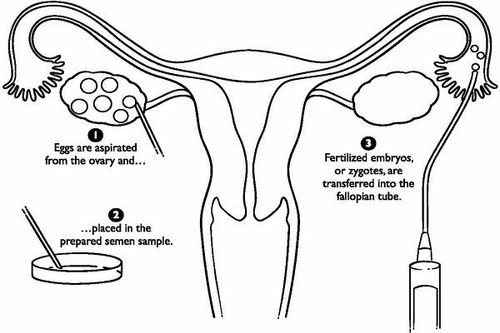
Phương pháp chuyển giao hợp tử trong vòi trứng (ZIFT)
Like intra-fallopian transfer of gametes, intra-fallopian transfer of zygotes allows the egg and sperm to be mixed together in the laboratory.
Different from the method of gamete transfer, the mixture after mixing will be pumped into the fallopian tubes through laparoscopic surgery; In zygote transfer, the doctor makes sure that the egg has been fertilized and becomes a one-cell embryo, also known as a zygote, before it is injected into the fallopian tubes through laparoscopic surgery.
Intra-fallopian transfer of zygote has a few side effects and disadvantages as follows:
Increases the chances of twins, as more than one zygote is normally introduced into the fallopian tubes. Due to the laparoscopic surgery, the recovery time is longer than IVF. You may feel some soreness around the incision. Most women must take the fertility drug Gonadotropins before the procedure, so side effects are possible. This method has a success rate of about 22%. However, since the advent of in vitro fertilization and intracytoplasmic sperm injection, intra-fallopian transfer of zygotes has rarely been used. use.
2.8. Donor eggs and embryos
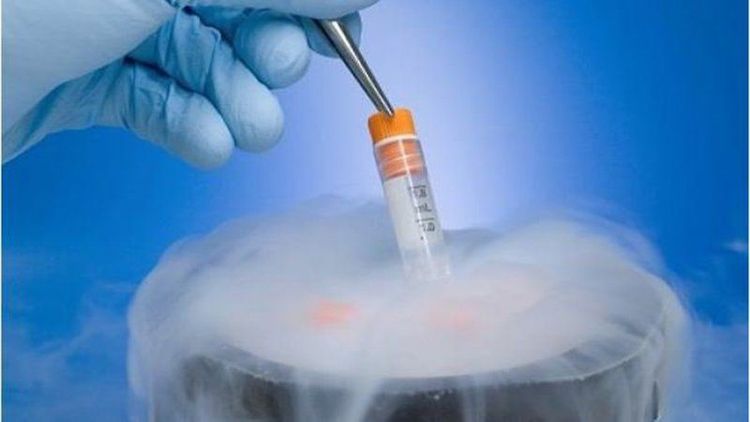
Phôi đông lạnh của người hiến tặng tỷ lệ thành công khoảng 37%
This method will use in vitro fertilization technique where an egg from another woman is mixed with the husband's sperm and then inserted into the wife's uterus. The wife will have to use drugs to stimulate the lining of the uterus to grow before the embryo is transferred to the uterus.
This method has some side effects and disadvantages such as:
You may feel sad that you do not have a child carrying your genetics. Choosing an egg donor can be a lengthy process. The risk of twins is increased if multiple embryos are transferred at one time. The success rate of the specific donor egg and embryo method is as follows:
With fresh eggs: 50% With frozen embryos from the donor egg cycle, the success rate is : 38%. With embryos created from frozen donor eggs, the success rate is about 43%. With donor frozen embryos, the success rate is about 37%.
2.9. Surrogacy
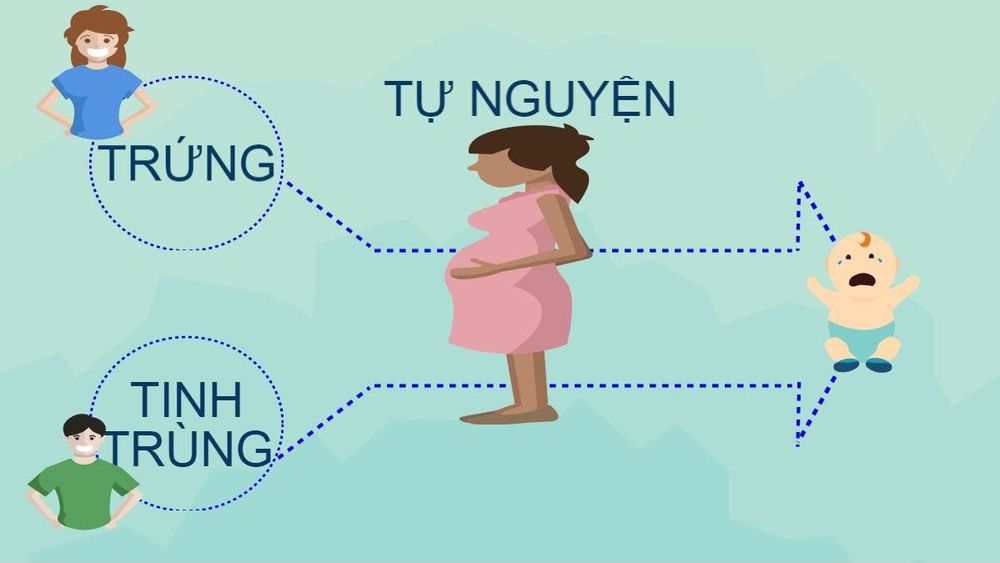
Mang thai hộ chi phí cao,phức tạp về mặt pháp lý
Surrogacy is the woman who will carry the couple's embryo or the donor's embryo until the birth is complete. This person will be stripped of all parental rights.
Some of the side effects and disadvantages of surrogacy, including:
Legal complications. Mental impact. High cost. Success rate of surrogacy:
Women aged 34 and under have a success rate of: 49% Women 35 to 37 years of age have a success rate of: 33% Women 38 to 40 age has a success rate of: 29% Women aged 41 to 42 years has a success rate of: 19% Women aged 43 years and over have a success rate of: 11% A couple is considered rare Being late doesn't mean they're completely childless. Using one or more of the above infertility treatments will help increase your chances of conceiving and having children.
Customers can come to the Center for Reproductive Support - Vinmec International General Hospital. This is the leading center in Vietnam, which has developed and applied a comprehensive medical examination and treatment process, combining both gynecology and obstetrics and gynecology to provide the optimal method for each patient's case.
Advantages when customers choose Vinmec fertility center:
Equipped with modern equipment, clean air system according to international standards to ensure lab quality, single cabinet system to optimize quality embryo, improving the success rate for each cycle of artificial insemination. Implement most advanced assisted reproductive techniques in the world: ICSI (injection of sperm into the oocyte cytoplasm); support embryo escape membrane; Reproductive reserve: embryo freezing, sperm freezing, oocyte freezing to help customers take the initiative in giving birth at will, transferring embryos on day 5, minimizing pregnancy; male infertility techniques (PESA, MESA, TEFNA, TESE) Besides advanced reproductive support methods, a team of excellent doctors in the country and the world, with prestige and long-term experience in the field of infertility .
Please dial HOTLINE for more information or register for an appointment HERE. Download MyVinmec app to make appointments faster and to manage your bookings easily.
References: babycenter.com, blog.lybrate.com




